An Illustrated History of Old Sutton in St Helens, Lancashire
Part 25 (of 95 parts) - Transport in Sutton (St Helens)
Researched & Written by Stephen Wainwright ©MMXX
Old Sutton in St Helens
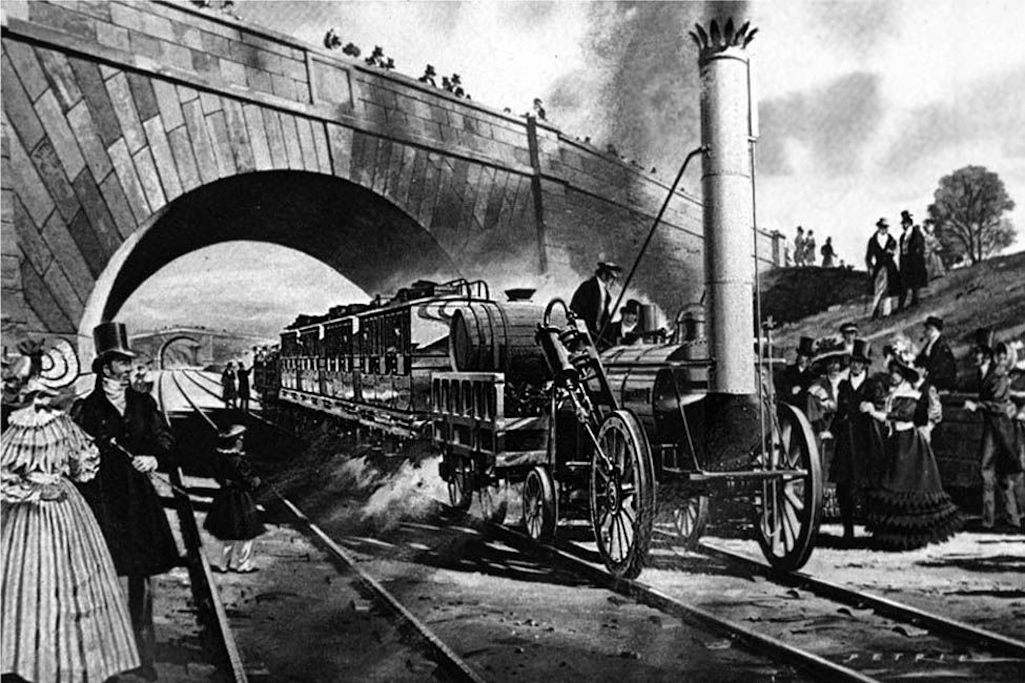
An illustration of the Rainhill Trials which took place between Lea Green and Rainhill during October 1829

Illustration of the Rainhill Trials between Lea Green and Rainhill in 1829

Illustration of the Rainhill Trials
Although England's first fully-fledged railway cut through the perimeter of Sutton township, it largely bypassed what was to become the borough of St.Helens. The Sankey Canal provided a means of transporting St Helens coal to Liverpool markets and beyond, but the railways were a much faster and more cost-effective alternative. They also didn't become impassable during cold, icy winters.
The new Liverpool and Manchester railway created a handy distribution network for Elton Head and Whiston collieries, however other St Helens’ pits were excluded. Their owners wanted a speedy connection with their customers, so in February 1833 the St Helens and Runcorn Gap railway was officially brought into service. The new line ended at Spike Island at Widnes and from there coal could be conveyed to Liverpool using the Mersey and the Cheshire salt fields via the River Weaver.
Although intended for freight, the St Helens and Runcorn Gap railway was also popular with passengers who could use the line for connecting to trains throughout the north-west. It served passenger stations at Sutton Oak (first appearing in a timetable in 1852), Farnworth, Bold, Peasley Cross, Union Bank and Clock Face. Sutton Oak station was originally known as 'Sutton' station, gaining the 'Oak' prefix in 1864. The bridges in Sutton, especially near Reginald Road, reveal that up to ten tracks crossed them.
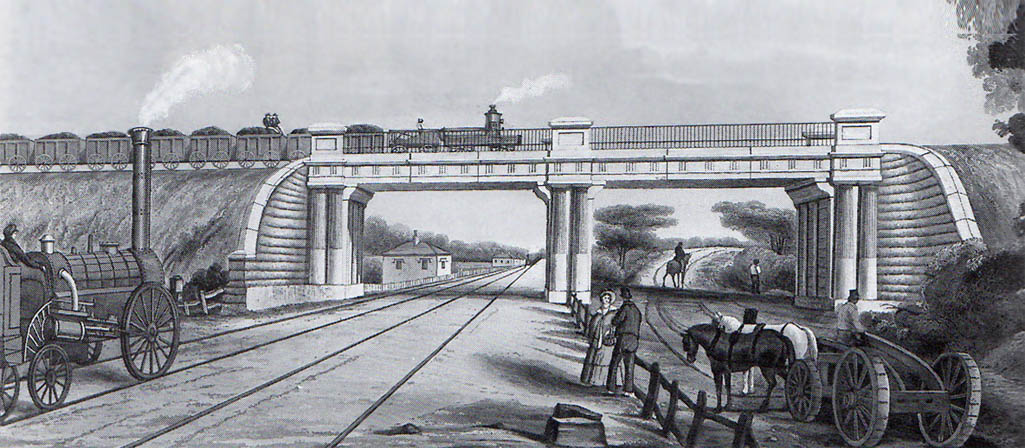
A postcard of the Sutton intersection bridge, the first place in the world where a railway crossed another railway

Sutton intersection bridge, the first place where a railway crossed another

Sutton’s famous intersection bridge
The two sets of railway lines meant that some residents of St.Helens Junction in Church Street (renamed Woodcock Street in 1902) and Railway Terrace now found themselves living in a triangle with just one way in, which became known as 'Pudding Bag'.
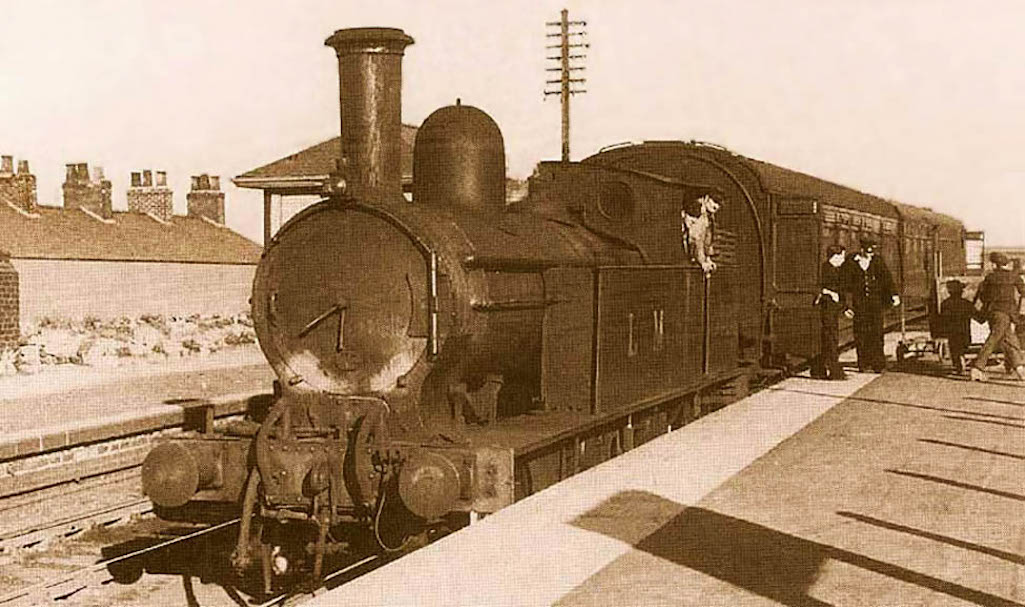
An undated photograph of passengers alighting from a steam train at Sutton Oak station

Passengers alighting from a steam train at Sutton Oak station

Passengers alight at Sutton Oak
Engine driver Ralph Thompson may well have been the first person to have been killed by a train in Sutton, dying on February 28th 1835 at the foot of Sutton Incline. Gatesman John Murphy had failed to switch back the points after he'd allowed a St Helens train to pass and so the locomotive of Thompson's Manchester-bound train was derailed. The engineer was thrown from his engine and killed on the spot when its wheels ran over him. Murphy, who had a house provided by the L & M Railway 50 yards from the spot, was charged with causing the manslaughter of Thompson through negligence. However, the 46-years-old was cleared at the Lancaster Lent Assizes when his excessive workload was explained.
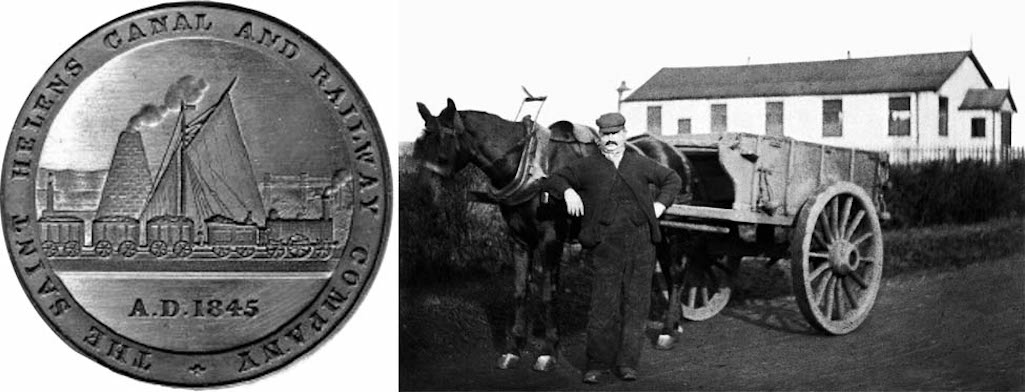
Despite the rise of the railway and trams, horse transport (shown here in Clock Face Road) was still widely used

Despite the rise of the railway and trams, horse transport was still used

Despite the rise of railway and trams, horse transport was still used
Their 'memorial' had been ignored and the newspaper complained that no attempt had been made to increase the accommodation or 'remove the dangerous place of landing for passengers'. This is the first newspaper reference that I've found for 'St Helens Junction' station, which was described as being 'miserable' in wet weather with no waiting room.
Until 1872 passengers from St.Helens to Liverpool had to transfer at St.Helens Junction station, with an average journey duration of 1 hour. The article in the Courier described how 16 passenger trains from St.Helens arrived each day and on Sundays 400 to 500 persons took short trips from the station. Newton races was probably the most important social occasion at that time and the Courier reported how at the last event, 16,000 persons had gone up the junction from St Helens over two days between transferring trains. The power of the press seems to have worked, however, as on September 20th 1851 the Manchester Courier reported that 'The St.Helens Railway Co. are about to erect a commodious new station at the junction with the main line at Sutton.'
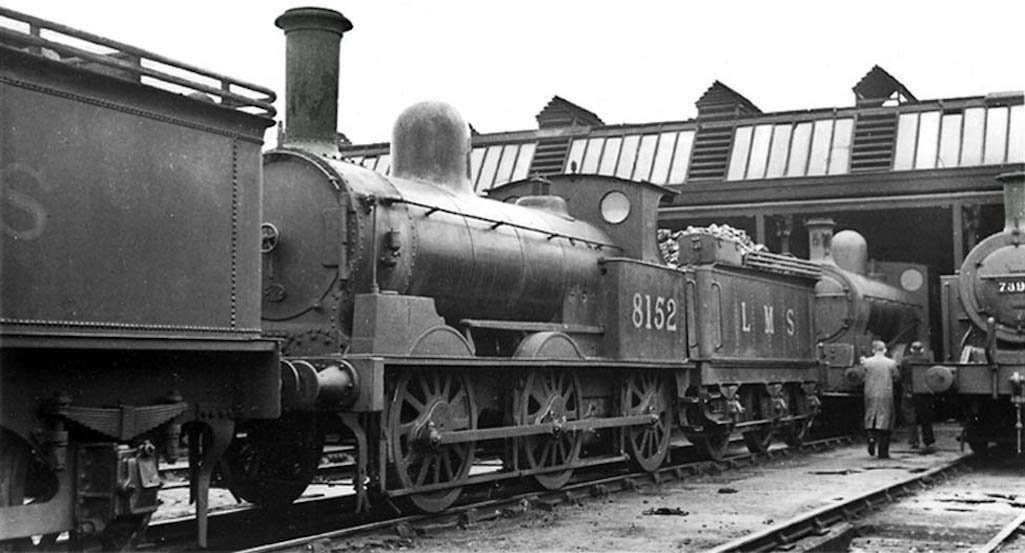
Sutton Oak Sheds pictured in 1939 - now the site of Morrison's supermarket car park in Baxters Lane

Sutton Oak Sheds in 1939 - now the site of Morrison's car park

Sutton Oak Sheds pictured in 1939
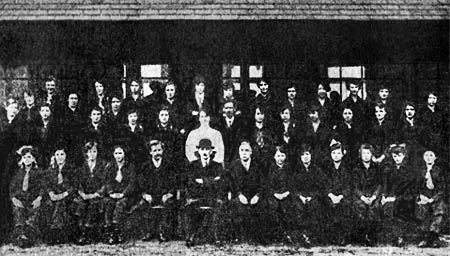
In Baxters Lane, where Morrison's supermarket car park now stands, engine sheds stored and maintained locomotives. Sutton Oak Shed was located adjacent to the Widnes line in the fork of the Sutton Oak Junction / Broad Oak Junction / Marsh’s Siding lines. This was about 250 yards up the St Helens to Runcorn Gap line from Sutton Oak station and they were a magnet for many a small boy.
The sheds originated in the 1830s at Sutton Oak Junction but they soon became inadequate and about 1859 they relocated to Penlake Lane at St Helens Junction. From 1872 until the 1960s, this site was used as Sheeting Sheds & General Stores, making tarpaulin sheets for railway wagons and street carts. Women made the sheets out of hessian on sewing machines. They were then sent to the dressing shop and a large machine dressed the sheets with a mixture of boiled linseed oil and black paint. This was known as black dressing, although cart sheets had a green dressing. The sheets were then placed in a large tank and stirred. Marking gangs marked each sheet with the letters LNW plus a number and then the sheets were hung up and dried prior to being despatched. Repairs to damaged sheets were also made at the works.
It was a large establishment as the building also served as a general stores for all of the London & North Western railway stations. Every Monday a train was dispatched full of railway supplies for the stations and railway depots. Many of the ‘Sheeting Shedders’ lived in Railway Terrace in the so-called Pudding Bag with access to the sheds from there over a bridge that went over the main line or alternatively from Lionel Street. From 1881 the General Stores & Sheeting Dept. Cricket Club held an annual athletics festival where what was described as ‘valuable prizes’ were awarded to the winners of flat, hurdle and bicycle races. These took place on a cinder path on the cricket ground. Special trains were run from Liverpool to St Helens Junction.
Writing in his memoirs Clog Clatters in Old Sutton, Frank Bamber recalled the Sheeting Shed bell ringing every workday at 8 o’clock, 12 o’clock, 1 o’clock and half past five. Henry Stones served as the superintendent in charge for many years during the later part of the 19th century. The works were ahead of their time, as women were said to enjoy the same pay as men. On October 24th 1874, a serious fire almost completely destroyed the sheeting works. It started in the drying shed and also destroyed a storehouse and workshop containing 'vast quantities of goods'. The smoke and flames was said to have been visible for miles around. Another fire occurred in the tarpaulin sheds on November 4th 1953, which caused more than £10,000 of damage and took the life of 57-year-old Jack Evans.
On June 11th 1920 a roll of honour was unveiled to those workers of the Sheeting Sheds & General Stores who had served in the war. The ceremony took place in the pavilion of their Recreation Club at St Helens Junction near the station. The superintendent who unveiled the memorial said the plaque: "Would hang up there for all time, to be a continual reminder of those who had served and those that had given their lives for their country's cause." A total of 106 men (mainly from Sutton) had served in the war with 16 losing their lives and 33 wounded.
In 1880 a replacement engine shed was opened at Sutton Oak. This was originally a 10 roads (aka track) ‘northlight’ brick-built shed, later reduced to 9 roads, with a coal stage and water tank above. There were two water columns and a 42 feet turntable. A signal box at Broad Oak Junction controlled movements from and to the shed.
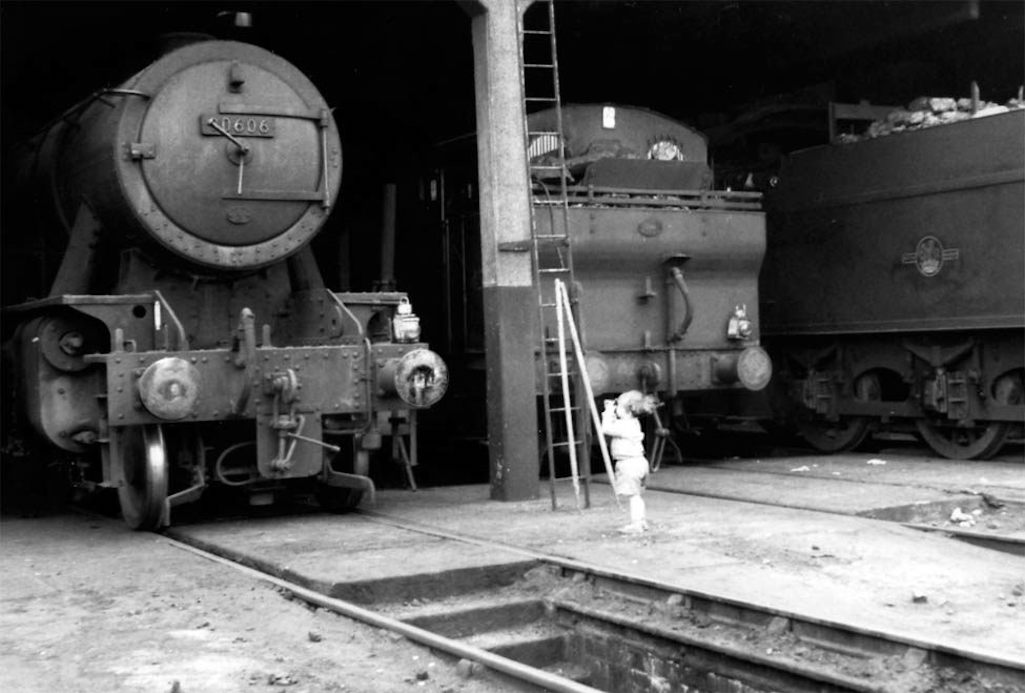
The steam locomotives at the Sutton Oak Sheds proved a magnet for many a small boy

The steam locos at the Sheds proved a magnet for many a small boy

Small boy at Sutton Oak Sheds
During the 1950s, there were about 170 workers at Sutton Oak Sheds under a Shed Master. These included 56 drivers, 56 firemen and 25 cleaners dealing mainly with freight business. It could be a dangerous place to work. In January 1936 fireman James Atherton of Reginald Road was fatally crushed at the sheds after being caught between an engine and a wagon. Then in February 1937 21-year-old fireman Thomas Potter had to have his left foot amputated after an engine ran over it.
The advent of diesel locomotives saw the end of the sheds, although an initial plan to close it in May 1964 was temporarily rescinded. The last steam loco left the Sutton Oak shed on December 4th, 1967. However the train drivers and guards, who had transferred from the former Sutton Oak station in 1964, still booked on and off duty at the shed until 1970.
During the 1970s, Sutton Oak Shed’s turntable, track, water tank and pump were removed. However, its well-structured building, with concrete pillars and roof built in 1957, was retained. Whelan Discount Stores operated a supermarket out of the site (which footballer Emlyn Hughes opened) and in 1979, Dave Whelan - who would later own JJB Sports and Wigan Athletic – sold his chain of stores to Morrisons. They closed their Baxters Lane store in 2000 and the engine shed was demolished in May 2002 and is now the car park of the supermarket.
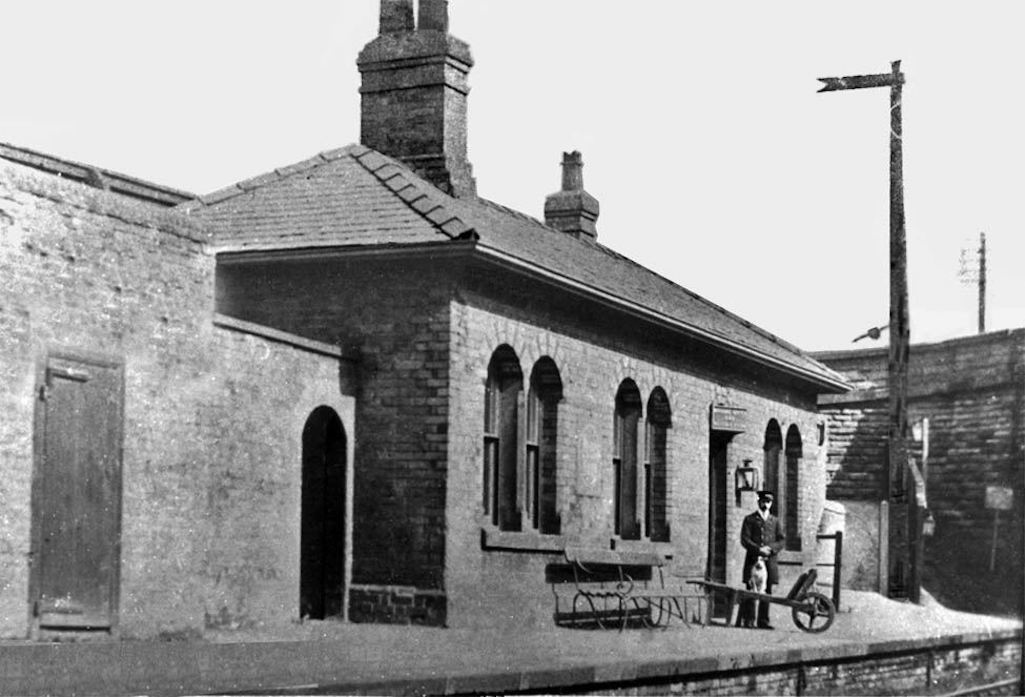
Clock Face station with porter and station dog, which was opened c.1845 and closed to passengers in 1951

Clock Face station was was opened c.1845 and closed to passengers in 1951

Clock Face station opened c.1845
Until the opening of Clock Face Collery, the vicinity of the station was sparsely populated and the line was more heavily used by goods trains. At a meeting of St.Helens Town Council in 1900 there was criticism that Clock Face was the only station in the district where trains didn’t stop on a Sunday. However, during the first half of the twentieth century, a steady passenger service developed between St.Helens and Widnes, running to Ditton Junction, where connections to Liverpool, Crewe, Manchester and even London could be made.

Left: Clock Face station in 1948; Right: The approach to the station under the old bridge, both now demolished

Left: Clock Face station in 1948; Right: The approach to the station under the old Clock Face bridge, both have now been demolished

Left: The Clock Face station in 1948; Right: The approach to the station
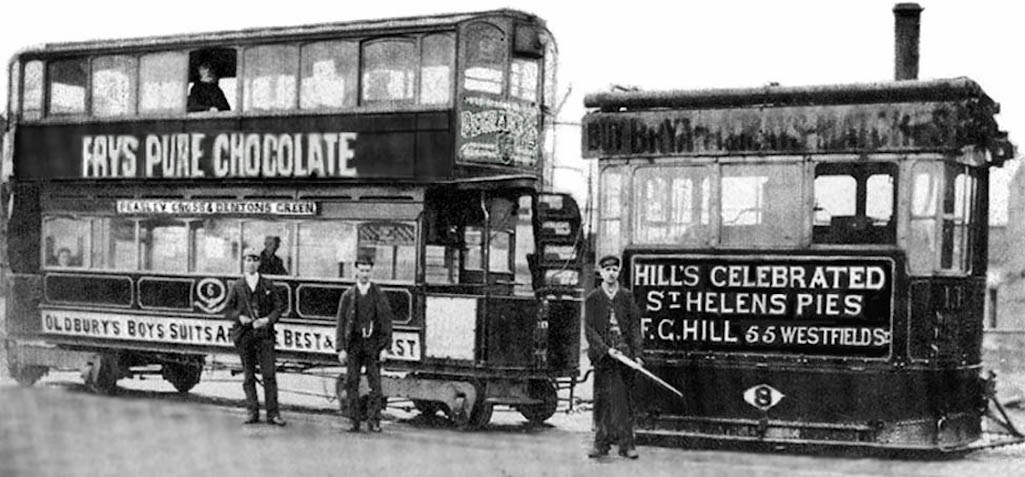
Steam engine no. 8 hauling passenger car no. 6 photographed at Peasley Cross about 1895

Steam engine no. 8 hauling car no. 6 at Peasley Cross c.1895

Steam engine no.8 at Peasley Cross
A one mile extension from Peasley Cross to St Helens Junction was constructed during the summer of 1900, opening on September 5th. However, due to disputes the terminus became Peckers Hill Road, some 200 yards short of the Junction station until 1925. At St Helens Town Council's meeting of December 5th 1900, the Electric Supply and Tramways Committee reported that they'd received a petition - known as a memorial - from residents in the expanding district of Clock Face requesting an extension of the tramways from Robins Lane. The committee said they'd bear it in mind, although there was probably an insufficient population at that time to make tram services commercially viable.
There were a number of complaints about the high speed of the electric trams - as they were then called - with some said to be dangerously exceeding 10 mph! On 12th April 1903, a tram from St Helens Junction collided at full speed with a steam tower-wagon which was undertaking maintenance work on overhead wires, which caused severe damage to both vehicles. Bridges could also be problematic, especially in Peasley Cross Road. Not only was the bridge there prone to delays through severe flooding, but it was fully capable of decapitating unsuspecting standing passengers on the top deck of open-top trams! So a large warning sign was erected on both sides of the Peasley Cross bridge.
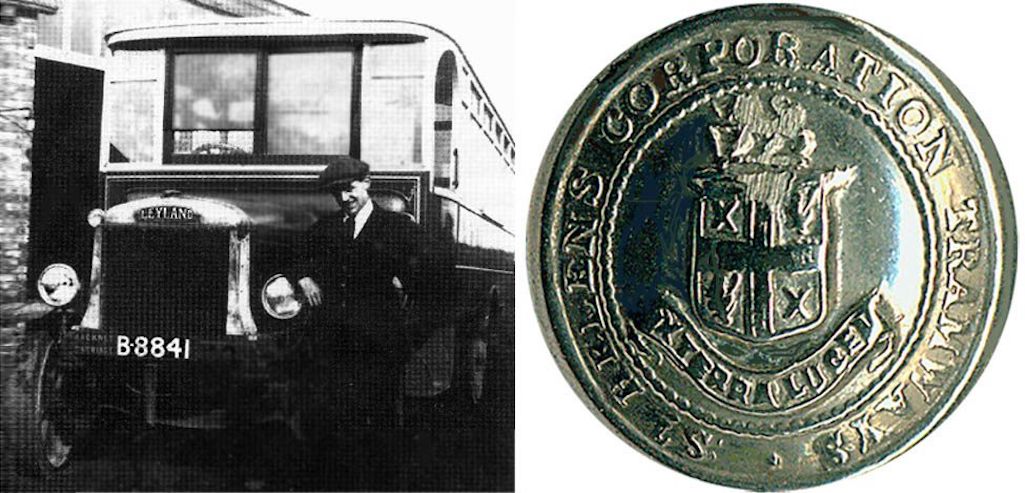
Left: A Sutton Manor single-deck ’Boneshaker' bus; Right: St.Helens Tramways staff badge

Left: Sutton Manor 'Boneshaker'; Right: St.Helens Tramways staff badge

Sutton Manor 'Boneshaker' bus and St.Helens Tramways staff badge
This began in June 1914 and became the first bus service in the town. According to a 'Whalley's World' article in the St. Helens Star, the single-deck 'boneshaker' (pictured above) was part of the old Sutton Manor fleet. This was used by the St.Helens & District Motor Service Co. Ltd which took over from County Carriers and was acquired by St.Helens Corporation in 1927.
Edie Carter was a regular contributor to Alan Whalley's column, who moved into the newly-built 109 Mill Lane in 1929. Edie recalled in one edition of 'Whalley's World' that there was no bus service passing their house at that time. So she had to walk to the bus stop at Marshalls Cross bridge to catch the bus to Clock Face shops or get the returning bus when she wanted to shop in St Helens.
Alternatively Edie could walk to Robins Lane for that service into town. The large-scale building boom that started to take place in Mill and Leach Lanes, Old Mill, Crane, Belverdere, and Clovelly Avenues, in the period from 1930 to 1934, brought hundreds of people into the area, and the provision of a bus service for them was easily justified, commencing in about 1935. Further major building developments after WW11, led to a much enhanced services.
In Part 2 of their trilogy ‘Industrial Railways of St Helens, Widnes and Warrington’, C. H. A. Townley and J. A. Peden describe how workers at Clock Face and Sutton Manor collieries were also able to use the railway to get to work. The workmen’s trains began after WW1 with day shift workers leaving St Helens station at 5.50am on Mondays to Fridays and at 5am on Saturdays. Stops were made at Peasley Cross and Sutton Oak stations to collect more passengers with the night shift train departing the town station at 10pm.
Carriages were separately designated for Clock Face and Sutton Manor mineworkers, with separation taking place at the Clock Face Colliery Sidings. Here a loco attached itself to the rear of the train and conveyed the Clock Face workers to their colliery. Then a Sutton Manor loco picked up the remaining coaches and hauled them in the opposite direction to the Manor. A simple but ingenious system that enabled workers not living in the colliery houses to get to work and which relied upon the collieries’ own private railways.
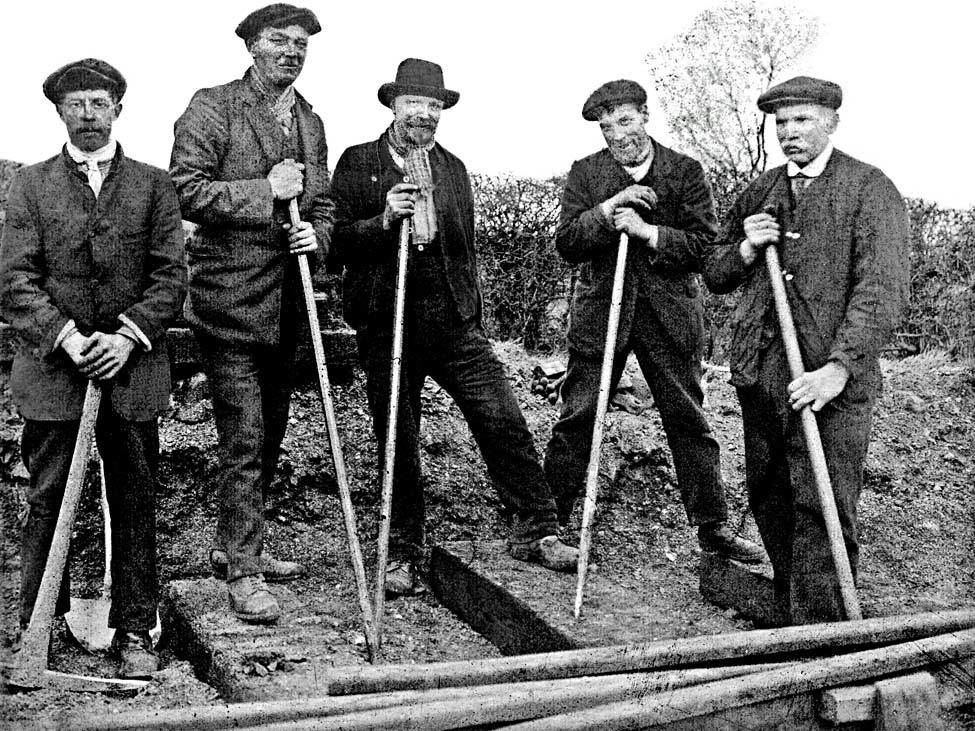
Railway platelayers pictured in Clock Face - On the right is David Callaghan - Contributed by Terry Callaghan

Railway platelayers in Clock Face - On the right is David Callaghan

Railway platelayers in Clock Face
In the picture the gang, holding pinch bars, are installing the points and lines to connect the pits - that the newly-formed Sutton Manor Collieries Ltd. were planning to sink - with the St.Helens and Widnes line at Clock Face Colliery Sidings. This was under an agreement with the LNWR railway company made in May 1905. The connecting line would not only be vital to take the coal away in the future, but would also be invaluable to bring in supplies for both sinking and mining operations. Clock Face Colliery had itself been connected to the line just years earlier under an agreement dated September 22nd 1896. An expansion of the rail layout at Lea Green Colliery had also taken place around this time, which like the Bold and Collins Green collieries, connected the mine to the Liverpool and Manchester line.

Left: Loco 'Clockface' (RSH 7180 - 1944) leaving Bold Colliery; Right: Clock Face Colliery signal box

Loco 'Clockface' leaving Bold Colliery and Clock Face Colliery signal box

Loco 'Clockface' leaving Bold Colliery and Clock Face Colliery signal box
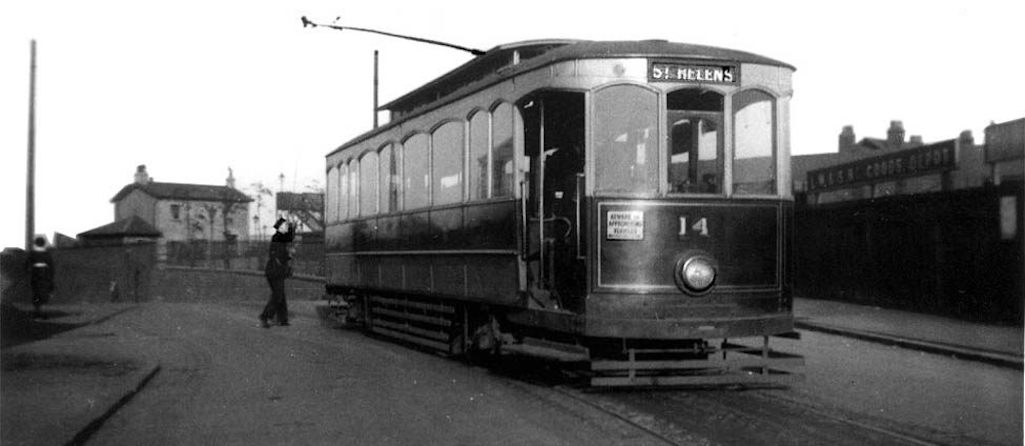
Tram 14 bogie car pictured at St Helens Junction in 1933 which was made by the Dick, Kerr company

Tram 14 bogie car at St Helens Junction in 1933 made by Dick, Kerr company

Tram 14 at St.Helens Junction in 1933
The trolleybuses had first appeared in St.Helens in 1927 and their vehicles and infrastructure were slowed rolled out throughout St.Helens. Despite people's familiarity with them, the trolleybuses still caused a stir when the Junction route first began. People were especially impressed by their silent running and punctuality. In an article entitled 'The Pride Of St.Helens Junction', the St.Helens Newspaper of May 10th 1935 described the effect that they were having on both passengers and passers-by:
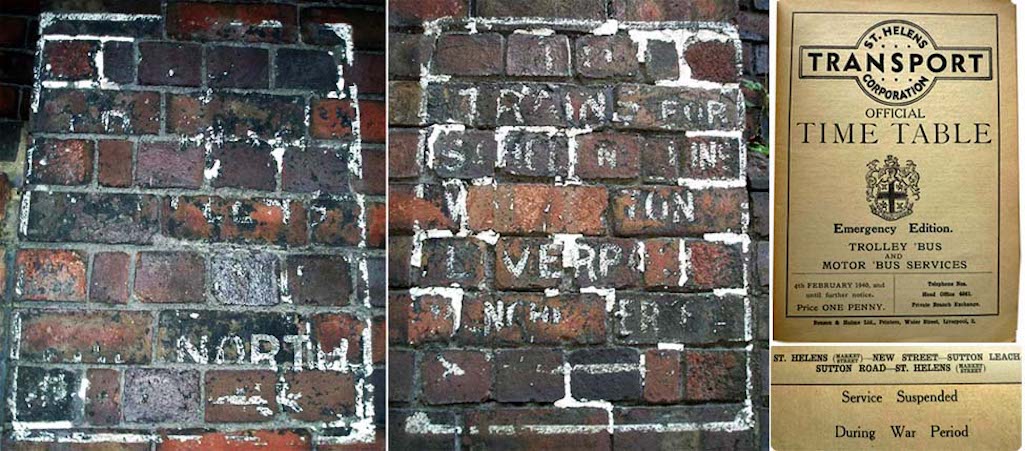
Left: Remnants of old Robins Lane Halt entrance signs; Right: St.Helens Wartime transport timetable

Remnants of old Robins Lane Halt signs and wartime transport timetable

Remnants of Robins Lane Halt entrance signs and a wartime timetable
The halt was opened as part of a policy to address the drift of passenger traffic to motor and trolleybuses by creating new, convenient railway stations close to residential areas. However, the station was closed just two years later (26/9/1938) due to insufficient passengers. The only remnants of its brief existence are part of the two station entrance signs which directed passengers to its north and southbound platforms. These can still be discerned underneath a Robins Lane bridge by Ellen Street (pictured above in 2008).
With the onset of war in September 1939, the contingency plans for rationing of motor fuel that had been drawn up during the summer, were put into operation. Motor bus operators were ordered to cut their timetables by 40% to reduce demand for fuel, which was likely to become scarce. St.Helens Corporation was given just three weeks to implement swingeing cuts and the Sutton and Bold districts were badly hit. The Sutton Leach circular and a service to Prescot via Sherdley Road were completely withdrawn and the Gorsey Lane and Bold Heath services were left with just one early journey. Plus Sutton Heath was only allowed buses on Fridays and Saturdays.
Before long there was some easing of the service reduction and some buses were run to Sutton Leach and Sutton Manor. With collieries and many factories in full production, it was realised that extra bus services were required to transport workers. Additional services included St.Helens to Warrington via Clock Face and Bold Heath plus St.Helens to Widnes via Bold Heath, as well as Sutton Manor. In December 1943, with Britain’s fortunes in the war improving, there were increased services to the Manor.
Post-war, the growth of new housing estates in the Sutton district led to pressure placed on St.Helens Corporation’s transport department for new and extended services. In September 1946 a new service to Sutton Leach was launched which was extended to Clock Face and Bold in the following February. This brought frequent daily services to the district for the first time. In 1950 the Bold and Gorsey Lane routes became linked to Clinkham Wood and the Sutton Heath service was extended to Sutton Manor.
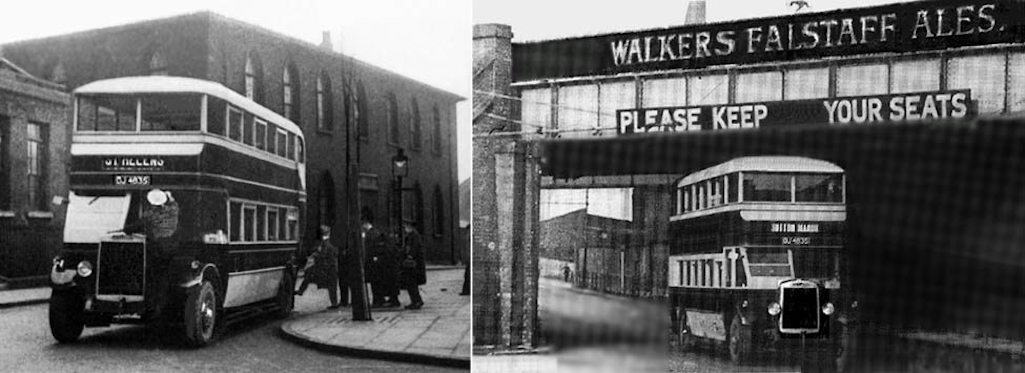
A Sutton Manor-bound bus driver changes the destination board and passing under Peasley Cross bridge

Left: A Sutton Manor-bound bus; Right: Passing under Peasley Cross bridge

Left: Sutton Manor-bound bus; Right: Passing under Peasley Cross bridge
From 1958 St.Anne’s RC Church boasted its own Sunday bus service. Worshippers were ferried to the church in St.Helens Corporation buses, which would wait in Monastery Lane during the service and then take the worshippers home. However, by this time bus numbers were starting to decline through an increased use of private transport and the growth of television. People were staying in more at night and not travelling as much to the cinema or theatre. The peak year for bus transport was in 1955-6 when 60 million passengers were carried in St.Helens.
The changing times were also causing problems in staffing, as drivers and conductors were taking up employment in sectors that offered better hours and more pay. One-man bus operation was seen as the solution and in April 1967 the 22 route between Lancots Lane and Eccleston became one of only two routes in St Helens to begin using one-man vehicles.
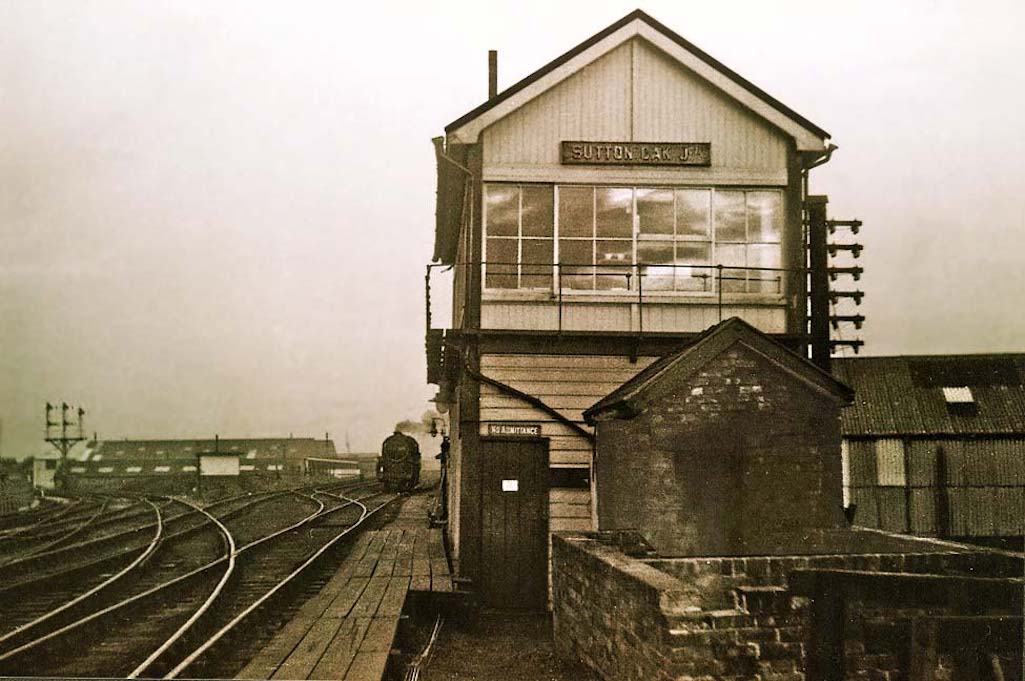
A Sutton Oak Junction signal box with a steam train from Parr shown approaching on its left

Sutton Oak signal box with a steam train from Parr approaching

Sutton Oak Junction signal box
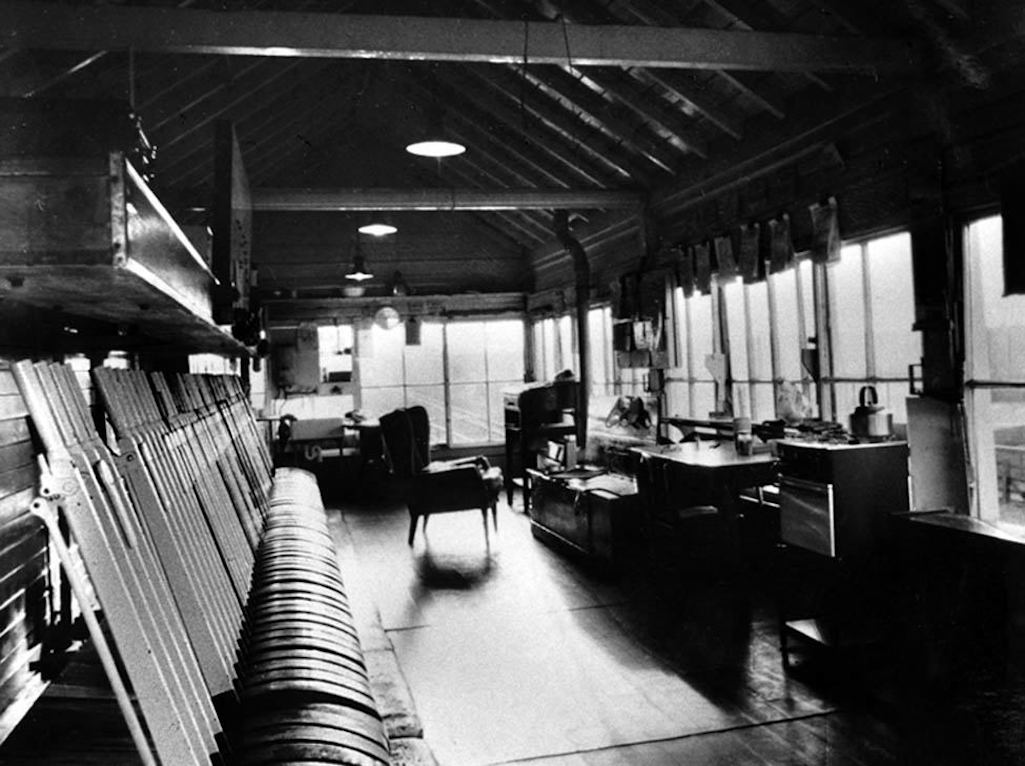
Inside the Sutton Oak Signal Box - Note the semaphore signal levers, gas lamps and stove

Inside the Sutton Oak Signal Box - Note semaphore signal levers

Inside the Sutton Oak Signal Box

Left: Eric Coffey accepts the last token; Middle: The last loco on the route; Right: Sutton Oak Junction sign in Mill Lane

Eric Coffey accepts the last token and the final loco on the route

Eric Coffey accepts the last safety token and the final loco on the route
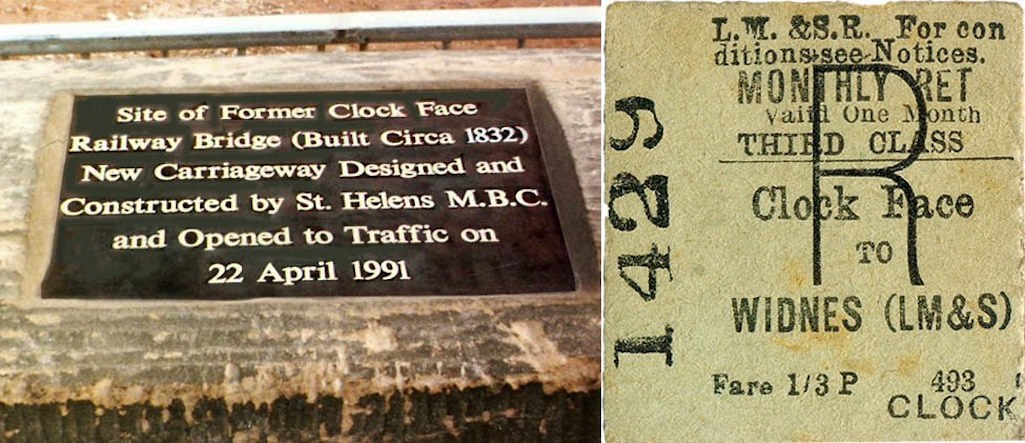
Left: Plaque in Clock Face Road, since stolen; Right: One of the last Clock Face tickets - issued 16th June 1951

Plaque in Clock Face Road, since stolen and one of the last Clock Face tickets

Plaque in Clock Face Road, since stolen
Lea Green station closed to all traffic on September 25th 1958. However, a new station was finally opened at Lea Green in September 2000, a few hundred yards to the east of the original and adjacent to Sherdley Park and the Bull and Dog. Interestingly this new Lea Green station had first been announced almost sixty-four years earlier to service an expanding residential population and compete with the motor buses which were becoming increasingly popular. However, the failure of Robins Lane Halt seems to have caused a rethink by the railway bosses.
As well as a new railway station at Lea Green there's also recently been new investment in the station at St Helens Junction to improve facilities and service the resurgence in train travel. Public transport by bus and train is now firmly established and with concerns over the environment, both are likely to retain their popularity within Sutton and St Helens for the foreseeable future.



